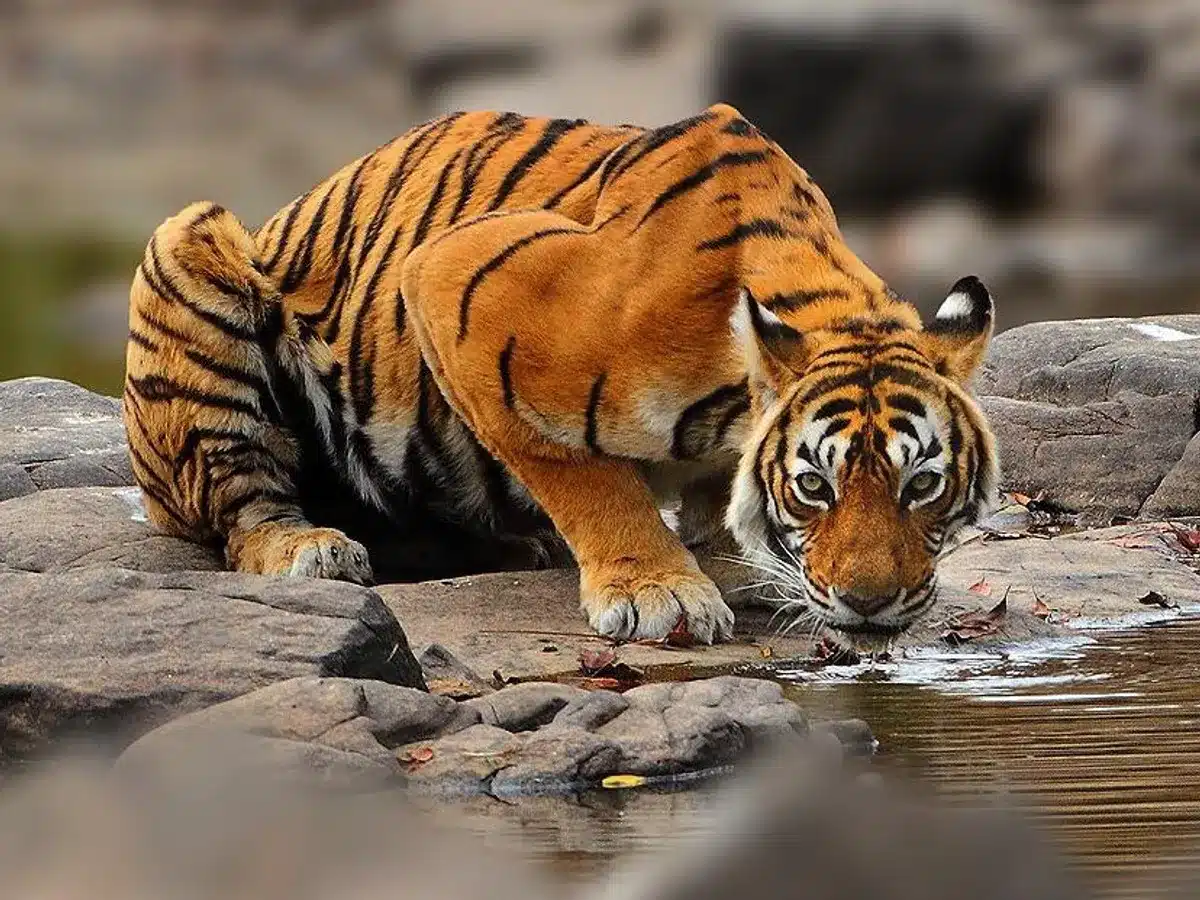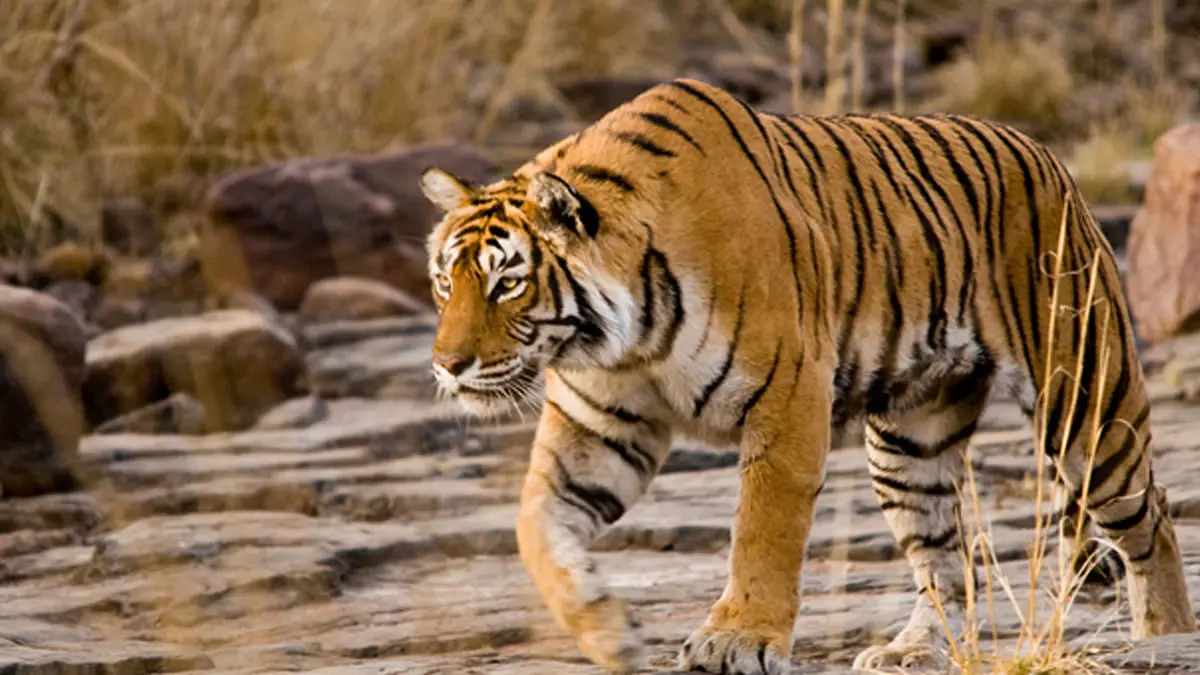Machli, known as the “Queen of Ranthambore,” is a name that commands reverence among wildlife enthusiasts and conservationists alike. Born in 1996 within the heart of Ranthambore National Park in Rajasthan, India, Machli became a symbol of the tiger’s grace, resilience, and power. Her remarkable prowess as a hunter and her unyielding bravery in the wild set her apart as one of the most iconic tigers to have ever lived. Machli’s lineage traces back to her mother, Lady of the Lake, and her father, T-16, but it was her own fierce spirit that would make her a legend in the animal kingdom. From a young age, Machli displayed an independence and strength that earned her the respect of the other creatures of the park.

A Fearless Hunter and Fighter
Machli’s reputation as an extraordinary hunter was cemented early on. Unlike most tigers, she was known for hunting large prey, including crocodiles—an act that became one of the defining moments of her life. Machli’s encounter with a massive crocodile in the waters of Ranthambore is perhaps her most famous and documented battle. The fierce struggle, captured by wildlife photographer Aditya Singh, depicted a bloody confrontation between Machli and a crocodile that had seized her leg. Despite the odds, Machli fought with unmatched determination, eventually breaking free from the crocodile’s grasp. This act of bravery not only made her a symbol of strength but also highlighted the importance of conserving the habitats of India’s tigers, who face threats from poaching, habitat destruction, and human encroachment.
The Longest-Living Tigress

Machli’s resilience allowed her to live an extraordinary life, making her the longest-living tigress ever recorded in the wild, surviving until the age of 19. Over her lifetime, she raised multiple litters of cubs, each inheriting her formidable genes and remarkable traits. Machli’s legacy as a conservation ambassador was recognized worldwide, as she became a symbol for the protection of tigers and their natural habitats. Her death in 2016 marked the end of an era, leaving a void in the wildlife community. Conservationists and wildlife lovers from all corners of the globe mourned her passing, but her legacy lives on in the efforts to protect India’s tigers.
The Legacy of Machli’s Cubs

Beyond her own achievements, Machli is also remembered for the legacy she left through her offspring. Her cubs, some of whom went on to become prominent figures in the Ranthambore Tiger Reserve, carry forward her legacy of courage and resilience. Machli’s cubs often bore the same distinct fish-shaped mark on their heads, a signature that tied them back to their legendary mother. Among her most notable cubs was Machli Junior, or T-16, who became a beloved figure for her striking appearance and gentle nature. Another of her offspring, T-19 (Krishna), became renowned for her hunting prowess and maternal instincts, raising her own cubs under difficult circumstances. The influence of Machli’s lineage continues to thrive in the park, with her cubs embodying her fighting spirit and helping to preserve the legacy of Ranthambore’s incredible tiger population.
Timeline of Machli’s Life
– 1996: Machli is born to Lady of the Lake (T-1) and T-16 in Ranthambore National Park.
– 2000: After the death of her mother, Machli rises to prominence as the dominant tigress of the region.
– 2004: Machli gives birth to her first litter of cubs, which includes both a male and a female.
– 2005: Her cubs become independent, and she welcomes another litter of cubs into the world.
– 2009: Machli engages in a legendary battle with a massive mugger crocodile, emerging victorious despite sustaining serious injuries.
– 2010: Machli gives birth to another litter of cubs, further securing her place as a vital force in the park.
– 2012: Machli’s health begins to decline due to age, and she becomes less active.
– 2013: Machli passes away at the age of 19, leaving behind a legacy of strength, courage, and the importance of tiger conservation.

